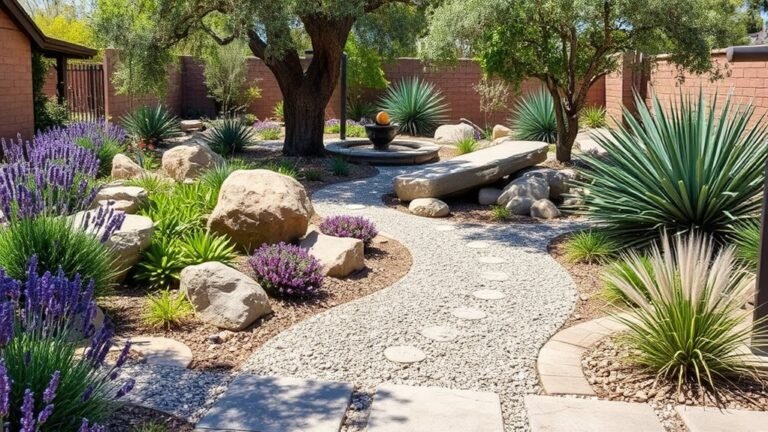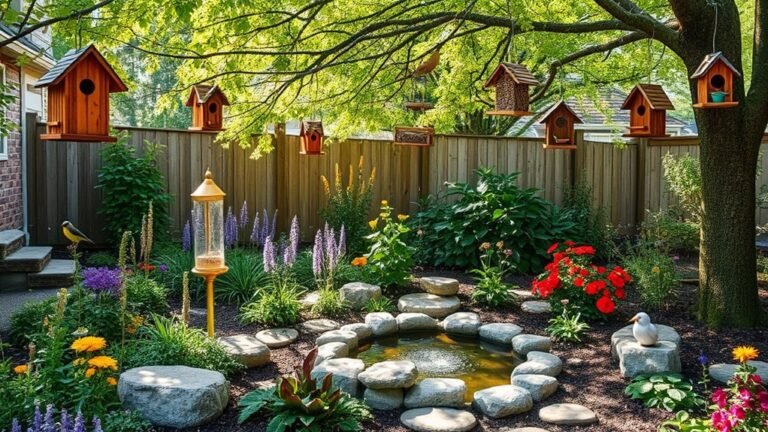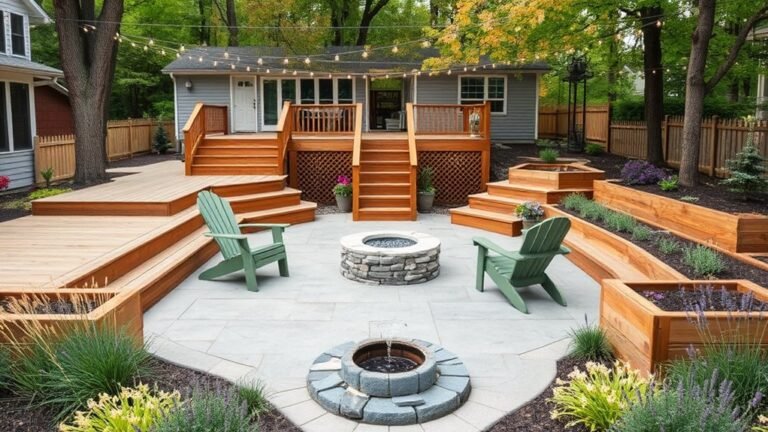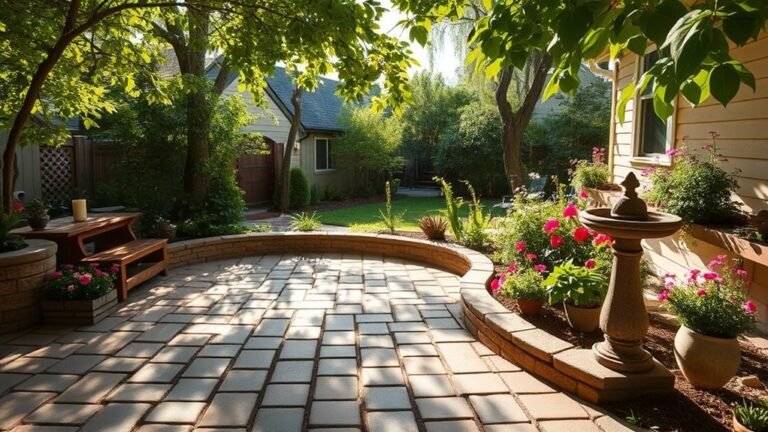15 Backyard Homestead Ideas for Sustainable Living
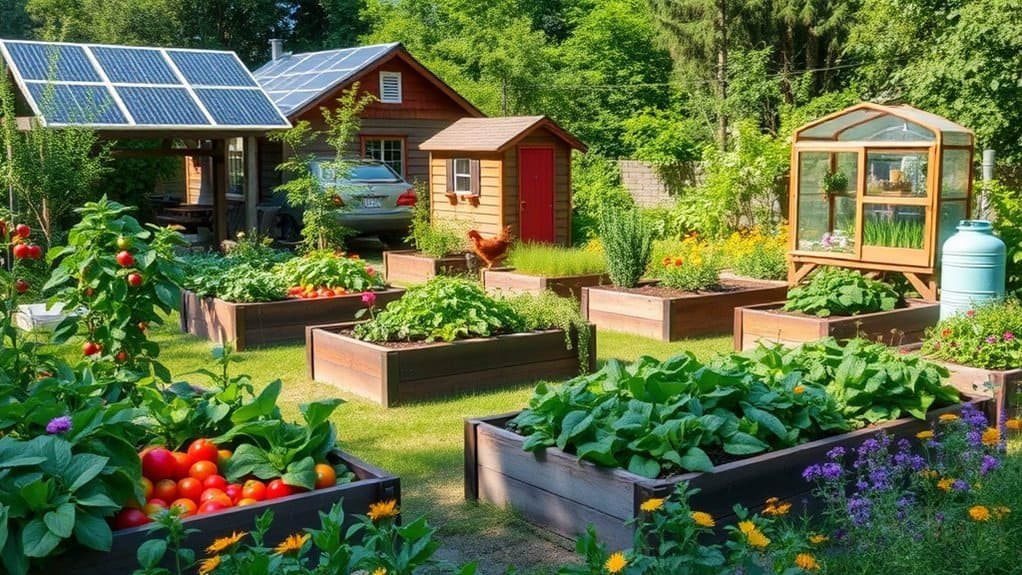
Enhancing your backyard for sustainable living can begin with a vegetable garden, raised beds, or fruit trees, contributing to self-sufficiency and a connection with nature. Implementing practices like composting and rainwater harvesting will also reduce your environmental footprint.
There's a wealth of options to explore that can transform your outdoor space into a thriving homestead, beyond just the basics. Each step you take supports a diverse ecosystem and promotes a sustainable lifestyle.
Start a Vegetable Garden

Starting a vegetable garden can be a rewarding project for your backyard. Picture stepping outside with a basket to harvest fresh veggies you've grown yourself!
Select a sunny spot that receives at least six hours of direct sunlight daily. Consider your favorite vegetables, like tomatoes, cucumbers, or unique lettuces that are hard to find in stores.
Make a list and gather seeds or seedlings. Planting is simple: dig a hole, drop in the seed, and cover it. Water them regularly and watch them sprout.
Don't forget to talk to your plants! Some believe it helps them grow, and it's a fun way to practice your stand-up routine.
Happy gardening, and enjoy your homegrown meals!
Build a Raised Bed
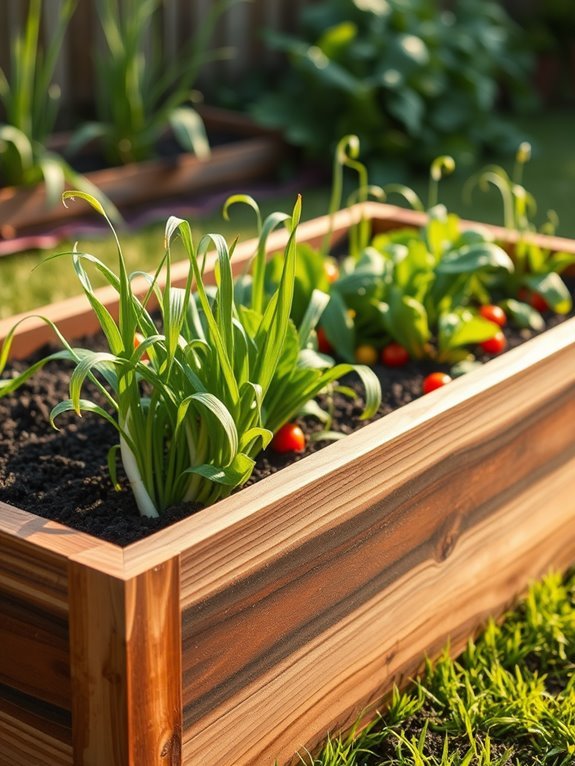
After planting your vegetable garden, consider enhancing it with a raised bed, which provides a cozy, well-drained home for your plants.
It's easy to build in just a weekend! Select a sunny spot in your yard and gather materials like wood, bricks, or recycled pallets.
Decide on the size; a width of 4 feet is ideal for easy access to the middle. Secure the corners of your frame with screws or nails, and line the bottom with cardboard or landscaping fabric to prevent weeds.
Once your frame is ready, fill it with rich, nutrient-dense soil, ensuring your plants thrive.
Raised beds not only support plant growth but also enhance the garden's appearance, making it look neat and organized.
Grab your tools, roll up your sleeves, and enjoy creating a beautiful space for your veggies!
Create a Compost Bin
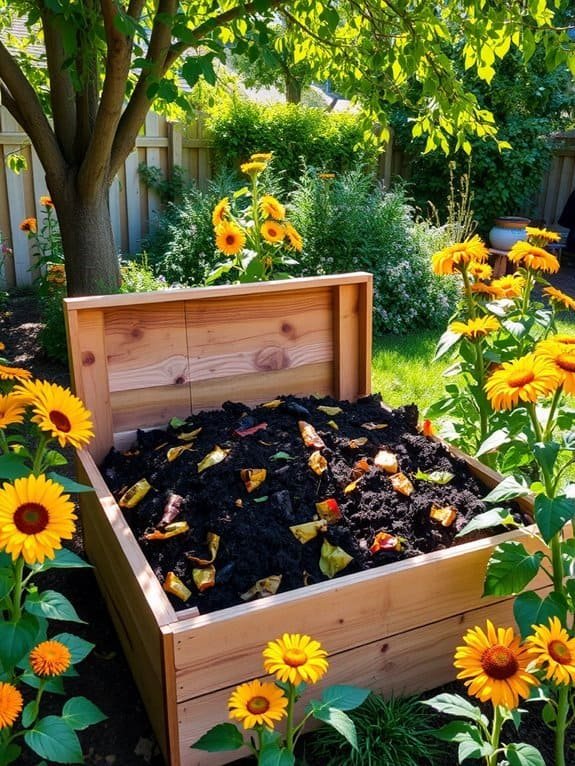
A compost bin is a valuable addition to your backyard, converting kitchen scraps and yard waste into nutrient-rich soil. By recycling vegetable peels, coffee grounds, and leaves, you'll reduce waste and enhance your soil's health.
Start by selecting an easily accessible spot. You can create a simple bin from wooden pallets or wire mesh, or purchase a pre-made one. Aim for a size of about 3 feet by 3 feet for easy management.
As you add materials, remember to maintain a balance: mix green materials (fruit scraps, grass clippings) with brown materials (dry leaves, cardboard).
Aerate the compost by turning it every couple of weeks.
In just a few months, you'll have rich compost ready to nourish your garden. Get started with composting and discover how trash can be transformed into treasure!
Install a Rainwater Harvesting System
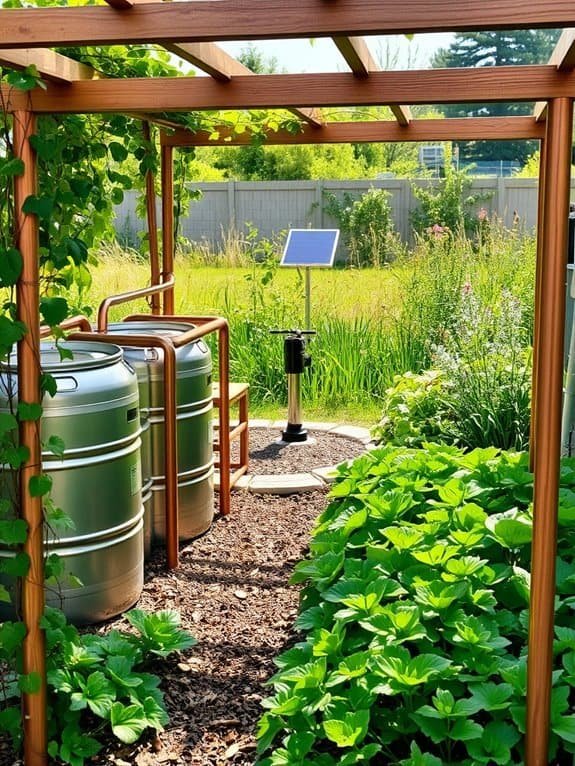
Enhance your backyard sustainability by installing a rainwater harvesting system. Collecting rainwater reduces your water bill and benefits the environment.
Start with a rain barrel placed under your downspout to collect rainwater from storms. Choose a sturdy barrel with a lid to keep out debris and mosquitoes, and consider painting it to match your home for aesthetic appeal.
When it rains, water flows into the barrel, ready for watering plants, washing your car, or filling a kiddie pool—you're recycling water straight from the sky!
For added convenience, set up a drip irrigation system linked to your rain barrel to keep your plants nourished while you relax.
Plant a Fruit Tree
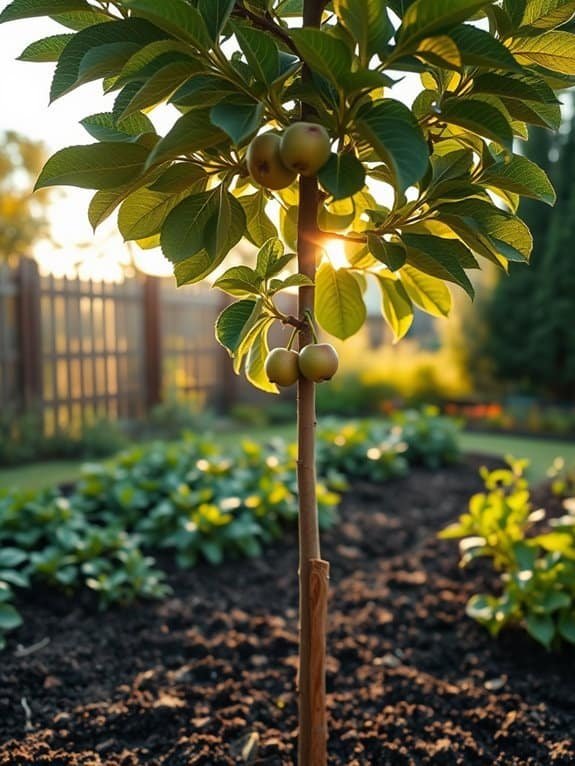
Planting a fruit tree can transform your backyard into a delightful haven. Picture stepping outside to pick ripe apples or juicy peaches from your tree—it's like having a personal grocery store, without the checkout line!
Fruit trees offer tasty treats along with beauty and shade. Depending on your climate and space, you can opt for compact dwarf varieties that fit into tight areas.
Simply select a sunny spot, and you're on your way to enjoying homegrown fruits.
Before planting, assess your soil and watering needs. Proper preparation is key! Ensure your tree has enough space to grow both above and below ground.
No need to be a gardening expert; many fruit trees are low-maintenance.
Once your tree begins to bear fruit, you'll feel like a gardening superstar, ready to make pies, jams, and snacks.
Grab a shovel and start digging—your backyard is ready for a fruity transformation!
Set Up a Herb Spiral
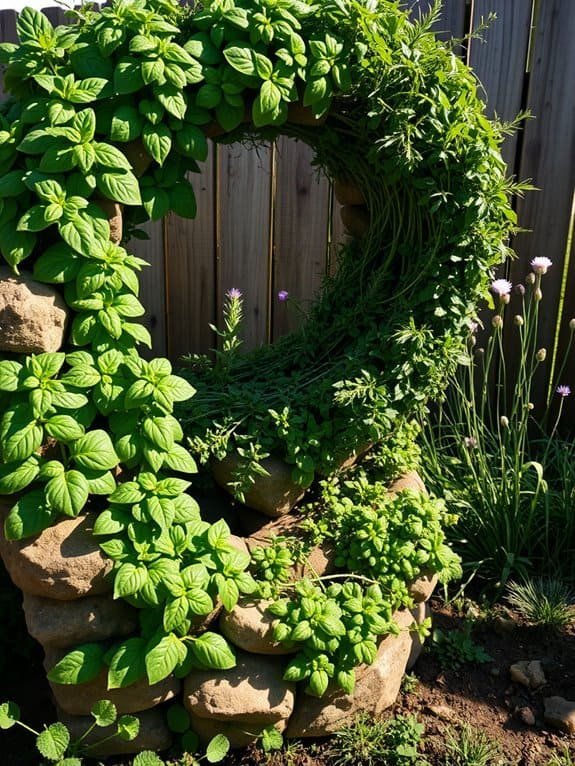
After enjoying your homegrown fruit tree, consider enhancing your backyard with a herb spiral. This creative gardening structure saves space and adds visual appeal, allowing you to cultivate a variety of herbs while optimizing sunlight and drainage.
Select a sunny spot and gather materials like stones or bricks to create a spiral about three feet in diameter. You can adjust the height as desired. Fill the spiral with rich soil and plant herbs like basil, thyme, rosemary, and mint, each thriving in the spiral's unique moisture and light conditions.
Remember to water your herbs regularly for healthy growth. Soon, you'll have a fragrant, functional garden to enhance your cooking and impress friends with your "spiral of flavor"!
Raise Backyard Chickens
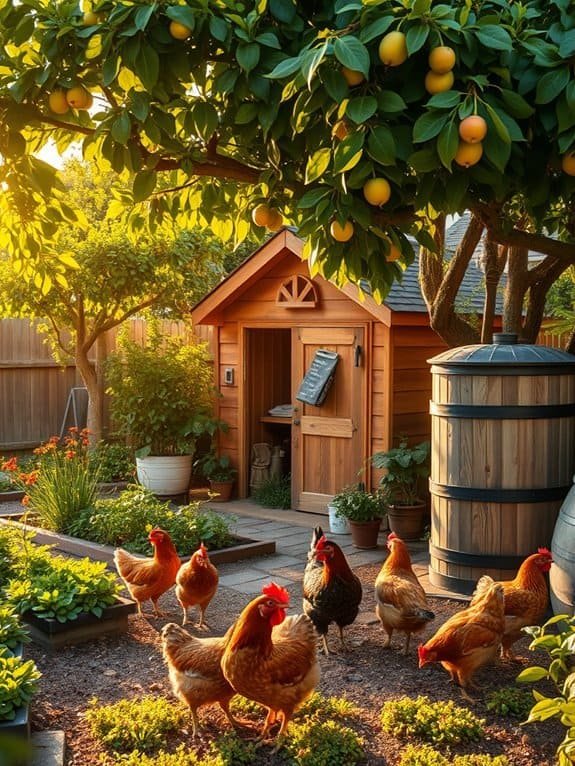
Raising backyard chickens can be a rewarding hobby, especially for enjoying fresh eggs. Picture stepping outside to find your feathered friends clucking and ready to lay delicious eggs!
Chickens aren't just egg producers; they also make great companions with their quirky personalities.
To get started, check local regulations to ensure you can keep chickens. After you receive approval, select hardy breeds that fit your lifestyle, such as Rhode Island Reds or Leghorns, which are known for their friendliness and egg-laying capabilities.
Next, build a secure coop to protect against predators and include nesting boxes for egg-laying. When considering coop designs, look for predator-proof construction to ensure your chickens are safe from potential dangers.
Chickens enjoy scratching around, so provide space for them to roam and take dust baths. Plus, don't forget to feed them kitchen scraps! They'll happily consume leftovers, reducing waste while providing you with cheerful clucks.
Create a Pollinator Garden

Creating a pollinator garden enhances local ecosystems and beautifies your backyard. Picture a lively scene filled with buzzing bees and fluttering butterflies attracted to your vibrant blooms.
Start by selecting a variety of native flowers like sunflowers, coneflowers, and milkweed, which are favorites among pollinators.
Plant flowers in clusters, as pollinators like visiting groups rather than scattered blooms. Ensure a diverse bloom schedule throughout the season for a consistent food supply.
Don't forget to provide water—a small birdbath or shallow dish with pebbles works well.
Avoid pesticides; your garden should be a haven for pollinators, not a battlefield.
If you're feeling creative, consider adding bee hotels or nesting boxes for solitary bees—think of it as offering a cozy Airbnb!
Start a Bee Hive
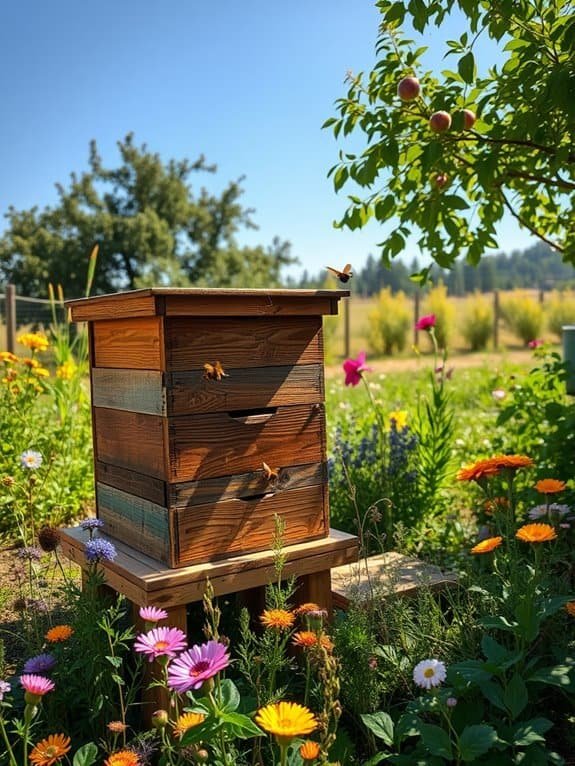
If you've ever dreamed of fresh honey from your backyard, starting a bee hive can make that dream a reality.
Check local regulations, as there may be specific rules about beekeeping. Once you're set, invest in a basic beekeeping kit, which includes a hive, protective gear, and tools.
Choose your bee breed wisely—Italian bees are known for being docile and productive.
When your bees arrive, allow them time to settle in, and enjoy observing them as they collect pollen and make honey. Regular hive inspections are essential to ensure your bees are healthy.
If a bee or two buzzes around you, they're likely just curious!
With practice, you'll become a honey-harvesting expert while supporting pollination. So, put on your bee suit and prepare for a sweet adventure!
Grow Mushrooms at Home
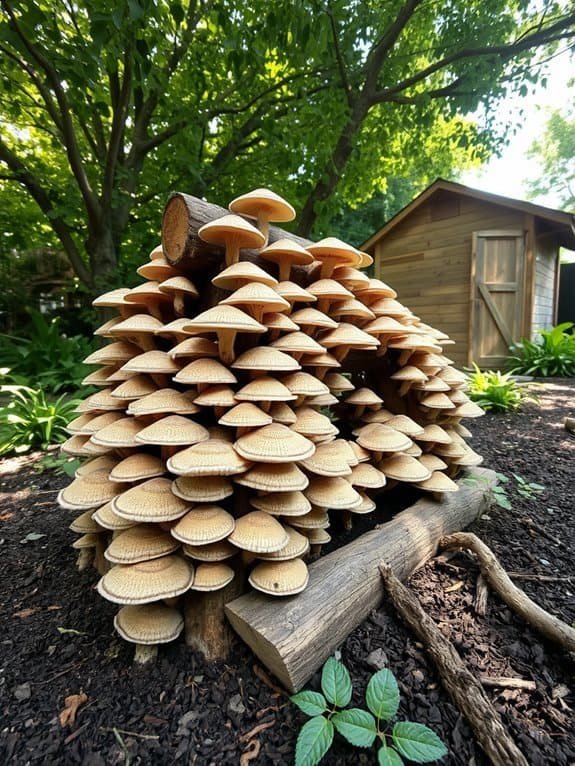
After experiencing the joys of beekeeping, why not enhance your backyard with homegrown mushrooms?
Growing mushrooms is enjoyable and expands your culinary options—imagine harvesting fresh shiitakes or oyster mushrooms right from your yard!
Start by selecting the right type of mushroom for your space.
Beginner-friendly kits simplify the process; just follow the instructions, and you'll enjoy fresh mushrooms in weeks.
Mushrooms prefer dark, humid conditions, so think creatively about their environment.
Use a shaded area in your garden, a basement corner, or even a closet.
For an adventurous twist, try growing them on coffee grounds or straw, which are great substrates.
Patience is essential.
Watching them grow is like waiting for tea to steep, but the result is rewarding.
Roll up your sleeves, grab your mushroom kit, and enjoy impressing friends and family with your gourmet creations in no time!
Build a Small Greenhouse
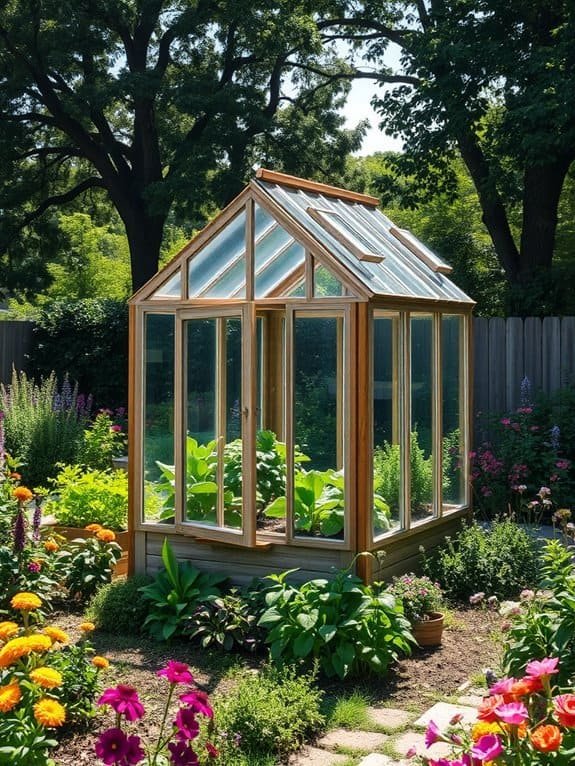
Building a small greenhouse can significantly extend your growing season and shield your plants from unpredictable weather. Picture stepping into your personal retreat filled with lush greens and vibrant blooms, regardless of the cold outside—perfect for indulging your gardening passion year-round! Start by selecting a sunny spot in your yard to maximize natural light. Determine the size that suits you—cozy yet spacious enough for your favorite herbs and vegetables. A DIY kit or repurposed old windows can both work well, but ensure proper ventilation to avoid creating a sauna for your seedlings. Once your greenhouse is ready, you can start seeds early in spring or grow heat-loving plants like tomatoes well into fall. Imagine having fresh basil for homemade pasta just outside your door! Don't forget to add shelves for potting soil, tools, and that charming gnome you've had your eye on! Creating a greenhouse oasis not only enhances your gardening experience but also transforms your backyard into a space of sustainable living, as seen in ways to transform your backyard with a greenhouse oasis.
Implement Vertical Gardening

Limited space doesn't have to hinder your gardening dreams—vertical gardening can transform even the smallest backyard into a lush oasis. Picture walls of vibrant greens and colorful flowers reaching for the sky! Use trellises, wall planters, or repurposed pallets for stunning designs.
Choose your plants wisely; herbs, strawberries, and trailing vines like cucumbers save space while adding beauty and function.
Once your vertical structure is in place, plant your greens and watch them climb. Remember to water them regularly—they need more care than your average houseplant.
Vertical gardening isn't only practical but also enjoyable! You'll feel like a gardening superhero as you elevate ordinary spaces into extraordinary ones, providing a great opportunity to showcase your handiwork during summer BBQs.
Start a Food Forest
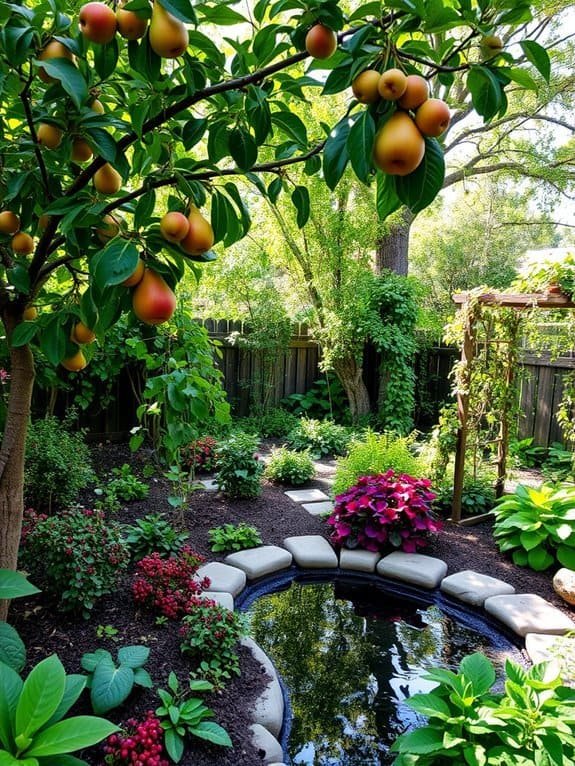
Creating a food forest can transform your backyard into a self-sustaining paradise filled with fruit trees, berry bushes, and edible plants.
Design your food forest in layers, starting with tall fruit trees in the back, smaller trees and shrubs in the middle, followed by herbaceous plants, and ground cover.
This diverse ecosystem not only yields fresh produce but also attracts beneficial wildlife like birds, bees, and butterflies, enhancing its beauty.
Additionally, it's a great way to teach your kids about nature and the origin of food!
Use Natural Pest Control
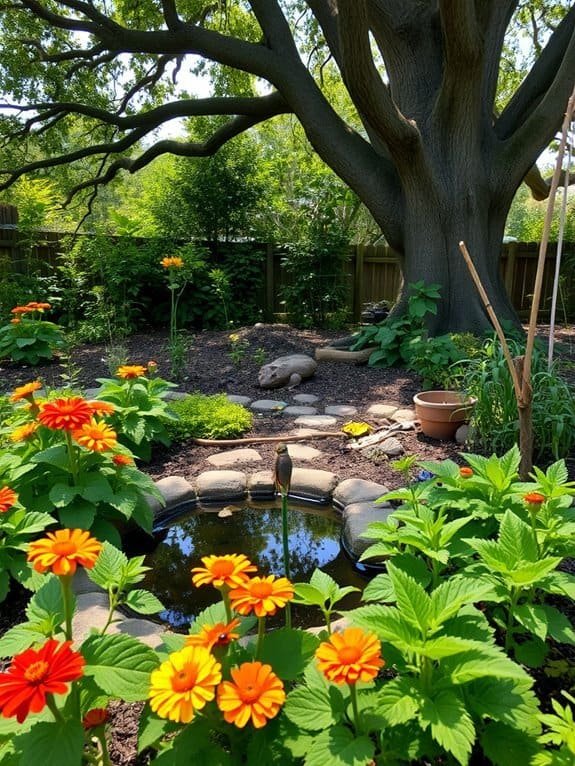
To maintain a healthy and thriving food forest without harsh chemicals, consider these three natural pest control methods:
- Introduce Beneficial Insects: Ladybugs and lacewings act as natural predators, consuming aphids and protecting your plants.
- Create a Barrier: Use row covers or netting to protect vulnerable plants from pests while allowing sunlight and rain to reach them.
- Plant Companion Herbs: Herbs like basil and mint can deter pests when planted near your vegetables, providing a fragrant natural repellent.
Install Solar Panels

Installing solar panels reduces energy bills and promotes a sustainable lifestyle. By harnessing solar energy, you keep your home bright while minimizing your carbon footprint—essentially giving the planet a hug! Start by assessing the sunlight in your backyard; a sunny spot is ideal. Next, evaluate your energy needs by reviewing your current bills to determine the number of panels required, using online calculators to simplify the process. Once you have a plan, you can hire a professional or attempt the installation yourself, prioritizing safety. Also, check for local incentives or rebates to help offset initial costs. Consider incorporating solar light options in your backyard to enhance your outdoor space while maintaining eco-friendliness.
Frequently Asked Questions
What Are the Costs Associated With Starting a Backyard Homestead?
When you jump into starting a backyard homestead, costs can vary widely.
You might spend on seeds, soil, and tools, plus any livestock if you're feeling adventurous.
Don't forget about fencing to keep those critters in (or out)!
It's easy to underestimate, but budgeting for unexpected expenses is a smart move.
With a bit of planning, you can keep your wallet happy while growing your own fresh food.
Who knew homesteading could be so fun?
How Much Space Is Needed for a Backyard Homestead?
You don't need a massive space for a backyard homestead—just a little creativity!
Even a small yard can fit a few raised beds, a couple of chickens, and maybe a fruit tree or two.
If you've got only a balcony, you can still grow herbs in pots.
Remember, it's more about how you use the space than how much you have.
Can I Start Homesteading in an Urban Environment?
Absolutely, you can start homesteading in an urban environment, just like planting a garden in a concrete jungle!
You'll need to get creative with your space, so think vertical gardens or container plants. You can raise chickens or rabbits if local laws allow, adding some charm to your backyard.
Don't forget about composting! It's like giving your kitchen scraps a second chance at life.
With a little effort, your urban oasis can thrive!
What Tools Are Essential for Backyard Homesteading?
When you're diving into backyard homesteading, having the right tools is key!
You'll want a sturdy shovel for digging, a rake for leveling things out, and shears for snipping those pesky weeds.
Don't forget a watering can or hose—your plants will thank you!
A compost bin is great for recycling kitchen scraps, too.
With these essentials, you'll be ready to dig in and grow your own little slice of paradise!
How Do I Maintain a Sustainable Lifestyle Beyond the Backyard?
Maintaining a sustainable lifestyle beyond your backyard means embracing eco-friendly habits wherever you go!
You can swap plastic bags for reusable ones, munch on local produce, and even bike instead of driving. Every little change counts, so get creative!
Join community clean-ups or swap clothes with friends—it's fun and fabulous!
Conclusion
Transform your backyard into a sustainable homestead! Home gardens can yield up to 1,200 pounds of food annually.
Enjoy the satisfaction of growing your own produce while helping the environment. Whether you plant a fruit tree or build a compost bin, every little effort counts.
Immerse yourself in the process, get your hands dirty, and watch your backyard thrive!

